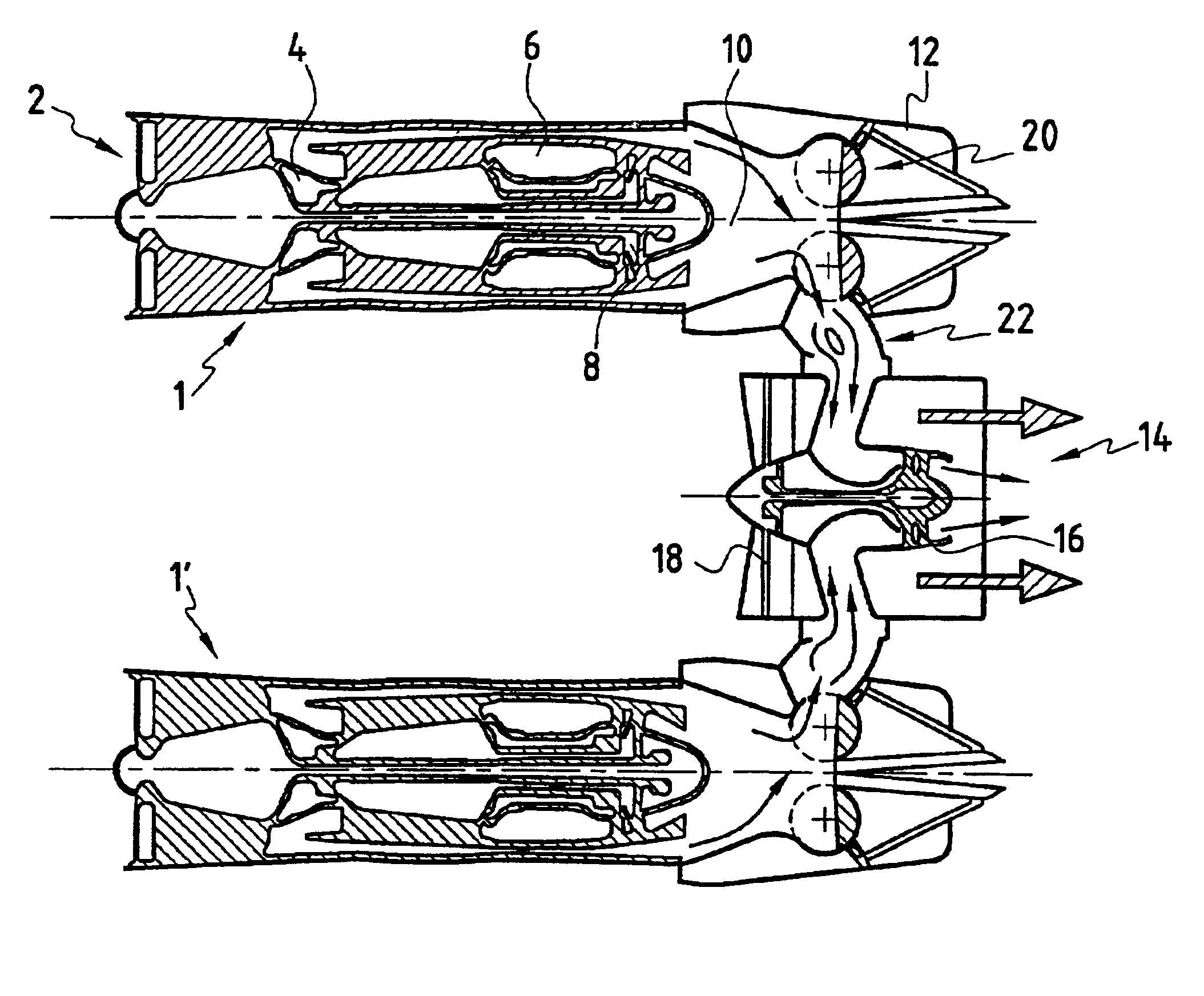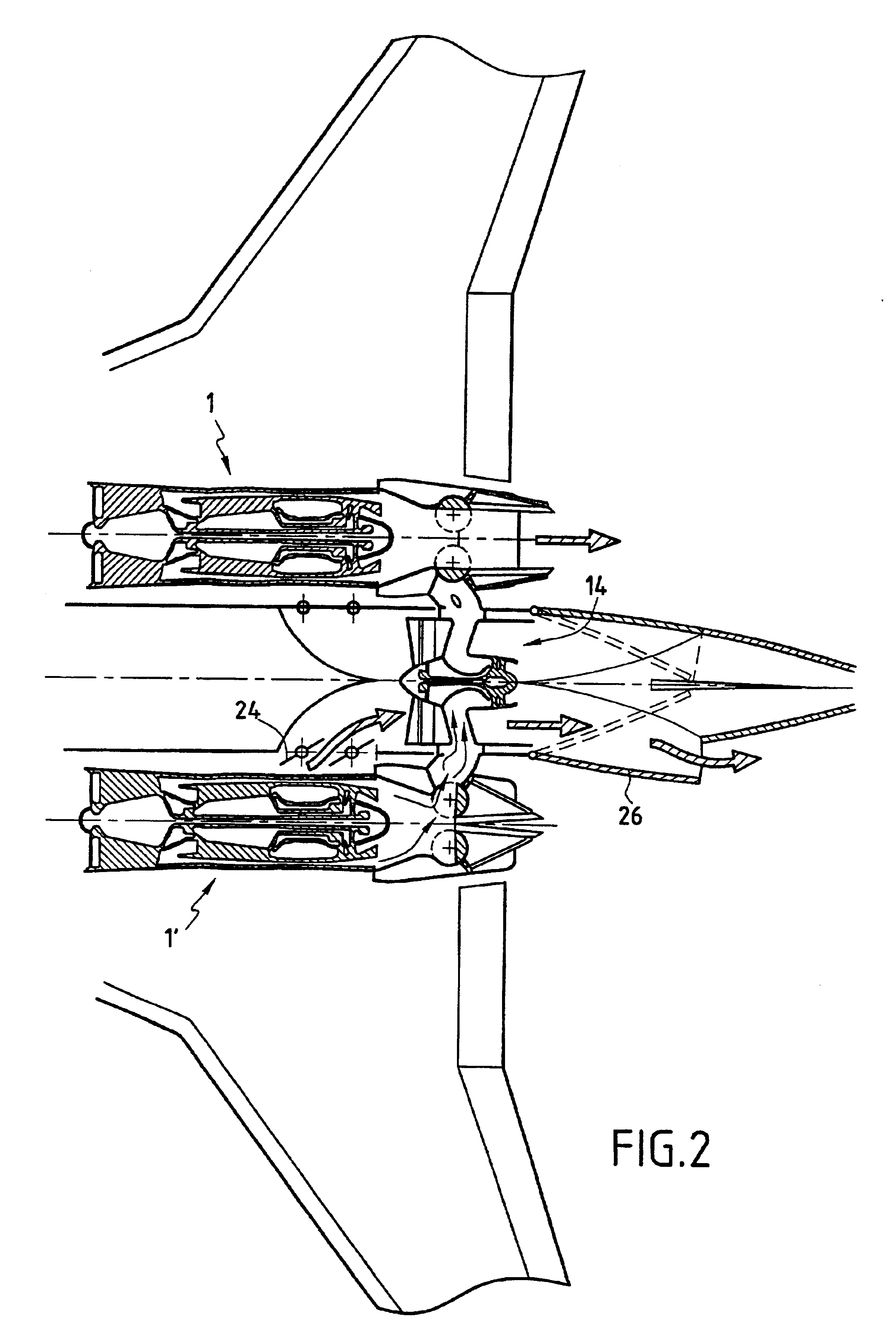Variable cycle propulsion system with gas tapping for a supersonic airplane, and a method of operation
a supersonic airplane and variable cycle technology, applied in the direction of machines/engines, marine propulsion, vessel construction, etc., can solve the problems of low specific thrust, low noise of airplane engines, and low bypass ratio of such designs, and achieve low drag and high bypass ratio
- Summary
- Abstract
- Description
- Claims
- Application Information
AI Technical Summary
Benefits of technology
Problems solved by technology
Method used
Image
Examples
first embodiment
With reference to FIGS. 1A and 1B, which are diagrammatic longitudinal section views through a system constituting the invention, it can be seen that the system is constituted in particular by two engines 1 and 1′. These engines are conventionally disposed in low-drag pads (not shown) which are generally connected to the bottom faces of the wings of an airplane, but which could equally well be installed on the top faces of the wings.
In conventional manner, the engines can be of the single-flow type, having one, two or three shafts, or of the double-flow type, having one, two or three shafts. In this embodiment, each engine comprises an air intake 2, a compressor section 4, a combustion chamber 6, a turbine section 8, and a combustion gas exhaust section 10. The engines are also dimensioned optimally for supersonic cruising flight (the period involving the longest flying time).
The combustion gas exhaust section 10 is terminated with a variable geometry nozzle 12 that is axially symme...
second embodiment
In the invention, shown in FIG. 3, the propulsion system comprises three engines 1, 1′, and 1″) feeding a single propulsion assembly 14 that is separate and dissociated from all three engines. As in the embodiment shown in FIG. 2, the propulsion assembly in this embodiment is directly integrated in the rear portion of the airplane, and a deployable exhaust nozzle 26′ is provided for exhausting the gases and producing the thrust needed for takeoff, landing, and subsonic cruising flight. In this example, it can be seen that two of the engines (1′ and 1″) are located beneath the wings of the airplane, while the third engine (1) is mounted at the root of the tailplane 28.
The tubes connecting the exhaust sections of the engines to the turbines of the propulsion assembly 14 open out into said assembly via sectors that are advantageously isolated from one another. Thus, in the event of one of the engines failing, there is no risk of the gas produced by the other two engines penetrating int...
PUM
 Login to View More
Login to View More Abstract
Description
Claims
Application Information
 Login to View More
Login to View More - R&D
- Intellectual Property
- Life Sciences
- Materials
- Tech Scout
- Unparalleled Data Quality
- Higher Quality Content
- 60% Fewer Hallucinations
Browse by: Latest US Patents, China's latest patents, Technical Efficacy Thesaurus, Application Domain, Technology Topic, Popular Technical Reports.
© 2025 PatSnap. All rights reserved.Legal|Privacy policy|Modern Slavery Act Transparency Statement|Sitemap|About US| Contact US: help@patsnap.com



